|

Topics in this section: egyptology-how it all began | great discoveries | great egyptologists | rosetta stone
Listed below are just some of the earlier pioneers who made the study and discoveries of Ancient Egypt famous:
THOMAS YOUNG 1773-1829
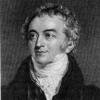 Both a scientist and linguist, who by the age of 14 was already able to read twelve languages, including Hebrew, Latin, Greek, Arabic, Persian, French and Italian. He qualified as a physician, making importing discoveries in the field of physics, but began to take an interest in the decipherment of Egyptian hieroglyphs, publishing a study of the Rosetta Stone in 1815. Although the actual deciphering of the stone was finally achieved by Jean François Champollion, Young was the first scholar to have translated the demotic script. Both a scientist and linguist, who by the age of 14 was already able to read twelve languages, including Hebrew, Latin, Greek, Arabic, Persian, French and Italian. He qualified as a physician, making importing discoveries in the field of physics, but began to take an interest in the decipherment of Egyptian hieroglyphs, publishing a study of the Rosetta Stone in 1815. Although the actual deciphering of the stone was finally achieved by Jean François Champollion, Young was the first scholar to have translated the demotic script.
JEAN FRANÇOIS CHAMPOLLION 1790-1832
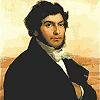 French Egyptologist who was responsible for the most important achievement in the history of the study of ancient Egypt - the decipherment of hieroglyphs. Equipped with an excellent knowledge of Hebrew, Coptic, Arabic, Syriac and Chaldaean, he embarked on the task of deciphering hieroglyphs using the Rosetta Stone as his principle guide. It was only at the time of the publication of his grammar and dictionary just before his premature death, that he finally achieved a satisfactory understanding of the language. He died of a stroke in 1832. French Egyptologist who was responsible for the most important achievement in the history of the study of ancient Egypt - the decipherment of hieroglyphs. Equipped with an excellent knowledge of Hebrew, Coptic, Arabic, Syriac and Chaldaean, he embarked on the task of deciphering hieroglyphs using the Rosetta Stone as his principle guide. It was only at the time of the publication of his grammar and dictionary just before his premature death, that he finally achieved a satisfactory understanding of the language. He died of a stroke in 1832.
GIOVANNI BELZONI 1778-1823
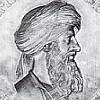 Belzoni was an Italian adventurer who made numerous discoveries, many of which were procured for European collectors and museums. He went to Egypt in 1814, and started working for Henry Salt in 1816, the then British Consul-General in Egypt, transporting part of a colossal statue of Ramesses II. This was to become one of the first major Egyptian antiquities in the British Museum collection. Belzoni's discoveries included the tomb of Seti I at Thebes and although his methods were somewhat unorthodox judged by modern standards, he was nevertheless an important pioneer in Egyptology. He died of dysentery in December 1823, whilst on an expedition to discover the source of the Niger. Belzoni was an Italian adventurer who made numerous discoveries, many of which were procured for European collectors and museums. He went to Egypt in 1814, and started working for Henry Salt in 1816, the then British Consul-General in Egypt, transporting part of a colossal statue of Ramesses II. This was to become one of the first major Egyptian antiquities in the British Museum collection. Belzoni's discoveries included the tomb of Seti I at Thebes and although his methods were somewhat unorthodox judged by modern standards, he was nevertheless an important pioneer in Egyptology. He died of dysentery in December 1823, whilst on an expedition to discover the source of the Niger.
AUGUSTE MARIETTE 1821-1881
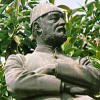 French Egyptologist who founded the Egyptian Antiquities Service and the world famous Egyptian Museum. Known for his four year excavations of the Serapeum at Saqqara. In June 1958 he was appointed the first director of the newly created Egyptian Antiquities Service which enabled him to gather together sufficient antiquities to establish a national museum at Bulaq, Cairo. He died at Bulaq in 1881 and was buried in a sarcophagus which was later moved to the forecourt of the modern Egyptian Museum in Cairo. French Egyptologist who founded the Egyptian Antiquities Service and the world famous Egyptian Museum. Known for his four year excavations of the Serapeum at Saqqara. In June 1958 he was appointed the first director of the newly created Egyptian Antiquities Service which enabled him to gather together sufficient antiquities to establish a national museum at Bulaq, Cairo. He died at Bulaq in 1881 and was buried in a sarcophagus which was later moved to the forecourt of the modern Egyptian Museum in Cairo.
GASTON MASPERO 1846-1916
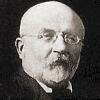 French Egyptologist who succeeded Auguste Mariette as Director of the Egyptian Museum, and edited the first fifty volumes of the immense catalogue of the collection there. In 1880, he made his first trip to Egypt at the head of a French archaeological mission that was eventually to become the Institut Français d'Archéologie Orientale. His distinguished career included the first publication of the Pyramid Texts and the discovery of the cache of royal mummies at Deir el-Bahri. French Egyptologist who succeeded Auguste Mariette as Director of the Egyptian Museum, and edited the first fifty volumes of the immense catalogue of the collection there. In 1880, he made his first trip to Egypt at the head of a French archaeological mission that was eventually to become the Institut Français d'Archéologie Orientale. His distinguished career included the first publication of the Pyramid Texts and the discovery of the cache of royal mummies at Deir el-Bahri.
WILLIAM MATTHEW FLINDERS PETRIE 1853-1942
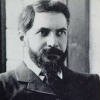 Widely recognised as the first scientific excavator in the history of Egyptian archaeology. He developed the method of "sequence dating" where the predynastic period was divided into a series of cultural stages that are still broadly recognised by modern archaeologists. Petrie's techniques of excavation were vastly superior to that employed by most of his contemporaries. Above all, he was determined to preserve and record as much of the evidence as possible, rather than concentrating on objects that would command a good price on the art market. Widely recognised as the first scientific excavator in the history of Egyptian archaeology. He developed the method of "sequence dating" where the predynastic period was divided into a series of cultural stages that are still broadly recognised by modern archaeologists. Petrie's techniques of excavation were vastly superior to that employed by most of his contemporaries. Above all, he was determined to preserve and record as much of the evidence as possible, rather than concentrating on objects that would command a good price on the art market.
HOWARD CARTER 1874-1939
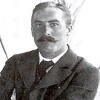 Carter joined the Archaeological Survey of Egypt in 1891 when he was only seventeen, and worked with both Gaston Maspero and Flinders Petrie at El Amarna in 1892. He resigned from the Egyptian Antiquities Service in 1903 after a row with some French tourists. He then worked for four years as a painter and dealer in antiquities until the offer of finance from Lord Carnarvon enabled him to return to excavation in the Valley of the Kings. Although he discovered six royal tombs at Thebes, his most famous achievement was undoubtedly the discovery of the virtually untouched tomb of Tutankhamun in November 1922. He spent the remaining seventeen years of his life recording and analysing the funerary equipment from the tomb, a task which is still incomplete today. Carter joined the Archaeological Survey of Egypt in 1891 when he was only seventeen, and worked with both Gaston Maspero and Flinders Petrie at El Amarna in 1892. He resigned from the Egyptian Antiquities Service in 1903 after a row with some French tourists. He then worked for four years as a painter and dealer in antiquities until the offer of finance from Lord Carnarvon enabled him to return to excavation in the Valley of the Kings. Although he discovered six royal tombs at Thebes, his most famous achievement was undoubtedly the discovery of the virtually untouched tomb of Tutankhamun in November 1922. He spent the remaining seventeen years of his life recording and analysing the funerary equipment from the tomb, a task which is still incomplete today.
PIERRE MONTET 1885-1966
French archaeologist Pierre Montet had previously been excavating sites at Byblos (on the coast of modern Lebanon) before he began work at Tanis in the Nile Delta in the winter of 1929. On the eve of the second world war Montet, and his team discovered six royal tombs - the occupants of two of the tombs are unknown, but the remaining four belonged to Psusennes I, Amenemope, Osorkon II and Sheshonq III. Two further royal burials had been placed in these tombs, Psusennes I also contained the hawk headed silver coffin of Sheshonq II as well as the coffin and sarcophagus of Amenemope, and the tomb of Osorkon II also held the sarcophagus of Takelot II. All the treasures were transported to the Cairo museum in May 1940, and have been on display ever since.
 |
Related pages: See our hieroglyphs page and discover the hidden meaning in the symbols >>
|
| |
Further information: You can find out more about the lives and discoveries of the early pioneers in Egyptology in the numerous publications available. Why not check out our recommended reading page for some ideas >>
|
Information window: The Rosetta stone >>
|





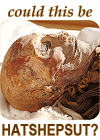
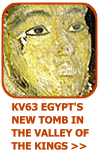
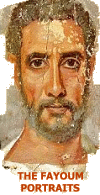
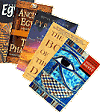
 Both a scientist and linguist, who by the age of 14 was already able to read twelve languages, including Hebrew, Latin, Greek, Arabic, Persian, French and Italian. He qualified as a physician, making importing discoveries in the field of physics, but began to take an interest in the decipherment of Egyptian hieroglyphs, publishing a study of the
Both a scientist and linguist, who by the age of 14 was already able to read twelve languages, including Hebrew, Latin, Greek, Arabic, Persian, French and Italian. He qualified as a physician, making importing discoveries in the field of physics, but began to take an interest in the decipherment of Egyptian hieroglyphs, publishing a study of the  French Egyptologist who was responsible for the most important achievement in the history of the study of ancient Egypt - the decipherment of hieroglyphs. Equipped with an excellent knowledge of Hebrew, Coptic, Arabic, Syriac and Chaldaean, he embarked on the task of deciphering hieroglyphs using the Rosetta Stone as his principle guide. It was only at the time of the publication of his grammar and dictionary just before his premature death, that he finally achieved a satisfactory understanding of the language. He died of a stroke in 1832.
French Egyptologist who was responsible for the most important achievement in the history of the study of ancient Egypt - the decipherment of hieroglyphs. Equipped with an excellent knowledge of Hebrew, Coptic, Arabic, Syriac and Chaldaean, he embarked on the task of deciphering hieroglyphs using the Rosetta Stone as his principle guide. It was only at the time of the publication of his grammar and dictionary just before his premature death, that he finally achieved a satisfactory understanding of the language. He died of a stroke in 1832. Belzoni was an Italian adventurer who made numerous discoveries, many of which were procured for European collectors and museums. He went to Egypt in 1814, and started working for Henry Salt in 1816, the then British Consul-General in Egypt, transporting part of a colossal statue of Ramesses II. This was to become one of the first major Egyptian antiquities in the British Museum collection. Belzoni's discoveries included the tomb of Seti I at Thebes and although his methods were somewhat unorthodox judged by modern standards, he was nevertheless an important pioneer in Egyptology. He died of dysentery in December 1823, whilst on an expedition to discover the source of the Niger.
Belzoni was an Italian adventurer who made numerous discoveries, many of which were procured for European collectors and museums. He went to Egypt in 1814, and started working for Henry Salt in 1816, the then British Consul-General in Egypt, transporting part of a colossal statue of Ramesses II. This was to become one of the first major Egyptian antiquities in the British Museum collection. Belzoni's discoveries included the tomb of Seti I at Thebes and although his methods were somewhat unorthodox judged by modern standards, he was nevertheless an important pioneer in Egyptology. He died of dysentery in December 1823, whilst on an expedition to discover the source of the Niger. French Egyptologist who founded the Egyptian Antiquities Service and the world famous Egyptian Museum. Known for his four year excavations of the Serapeum at
French Egyptologist who founded the Egyptian Antiquities Service and the world famous Egyptian Museum. Known for his four year excavations of the Serapeum at  French Egyptologist who succeeded Auguste Mariette as Director of the Egyptian Museum, and edited the first fifty volumes of the immense catalogue of the collection there. In 1880, he made his first trip to Egypt at the head of a French archaeological mission that was eventually to become the Institut Français d'Archéologie Orientale. His distinguished career included the first publication of the Pyramid Texts and the discovery of the cache of royal mummies at Deir el-Bahri.
French Egyptologist who succeeded Auguste Mariette as Director of the Egyptian Museum, and edited the first fifty volumes of the immense catalogue of the collection there. In 1880, he made his first trip to Egypt at the head of a French archaeological mission that was eventually to become the Institut Français d'Archéologie Orientale. His distinguished career included the first publication of the Pyramid Texts and the discovery of the cache of royal mummies at Deir el-Bahri. Widely recognised as the first scientific excavator in the history of Egyptian archaeology. He developed the method of "sequence dating" where the
Widely recognised as the first scientific excavator in the history of Egyptian archaeology. He developed the method of "sequence dating" where the  Carter joined the Archaeological Survey of Egypt in 1891 when he was only seventeen, and worked with both Gaston Maspero and Flinders Petrie at
Carter joined the Archaeological Survey of Egypt in 1891 when he was only seventeen, and worked with both Gaston Maspero and Flinders Petrie at